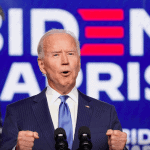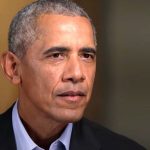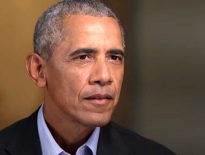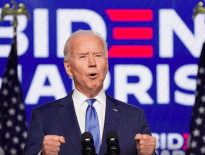While two women came before her, Kamala Harris is the first on a winning ticket. Here are the key factors behind her success.
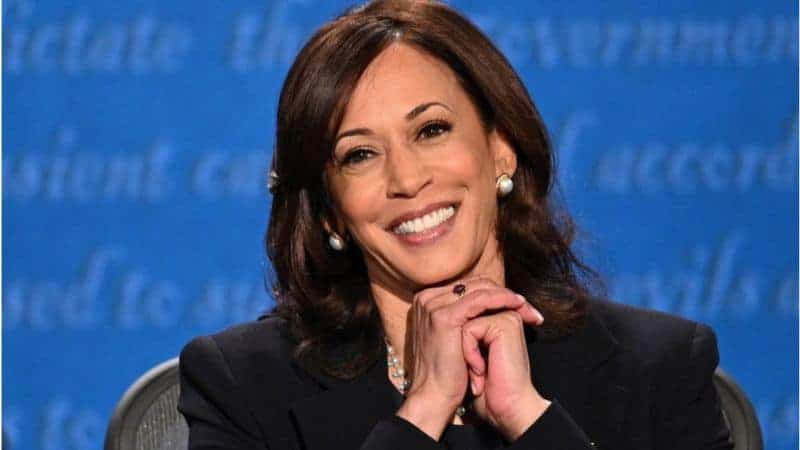
Vice President-elect Kamala Harris is set to become the first woman to make it across the finish line to the White House. Two other women came before her. Both were on losing tickets.
In 1984, Geraldine Ferraro went down in flames along with Democratic presidential nominee Walter Mondale, winning just one state and the District of Columbia against President Ronald Reagan in an epic shellacking that seems unreal compared to our fraught times. (Look at this seriously red map!)
In 2008, then-Alaska Gov. Sarah Palin’s hockey mom, pitbull thing wasn’t enough to put John McCain ahead of Barack Obama. Indeed, Palin’s lack of preparedness for her moment in the spotlight was likely more of a liability for the late Republican senator from Arizona.
It’s hard to extrapolate much from a sample size of three, but there are a few key factors behind Harris’ success. And they point the way toward more female candidates to come.
Harris Was No Last-Ditch Pick
The 2020 election marked the first time a woman wasn’t chosen as a last-ditch effort by a flailing candidate. Harris was a deliberate pick by Biden, who had said all along he would select a woman. Crucially, he had a lead over Donald Trump in the polls and a clear shot at winning.
Mondale and McCain were struggling when they chose their running mates, and the selection of a woman was a Hail Mary play to generate excitement.
Palin, who was not well known outside of Alaska, was famously not well vetted by the McCain team in the rush to get her on the ticket. Ferraro was a congresswoman from New York, not a national figure.
Mondale and McCain were behind in the polls and needed to have a game changer vice presidential selection, said Betsy Fischer Martin, executive director of the Women & Politics Institute at the American University School of Public Affairs. They had very little chance of actually winning. Especially when you look at the landslide victories of their opponents.
Harris Was A Well Known National Figure
Harris was not an obscure pick. She has fans and national recognition. She grabbed headlines in 2018 when her pointed grilling of then-Supreme Court nominee Brett Kavanaugh went viral. She widened her appeal by running for president herself, and was considered a serious contender for the 2020 Democratic nomination.
Harris, in fact, had one of the very few memorable moments from the many, many Democratic debates in this cycle, when she took on Biden about his record on busing.
This wasn’t somebody who nobody had heard of, plopped in as a way to demonstrate some sort of symbolic nod to women, said Jennifer Lawless, a political science professor at the University of Virginia.
Women Almost Never Get Selected
The fact is, the bottom-line reason more women haven’t been vice presidential candidates is extremely simple: Almost all the time, men get chosen as running mates. You must be in it to win it, as the saying goes.
Women, despite having relatively similar or better results in elections, are still seen as risky candidates ― especially for executive-level roles. There has still never been a Black woman elected governor, and only 44 female governors in U.S. history, compared to more than 2,300 men.
Even dumber, women are not typically viewed as vice presidential because literally if you look at all the past vice presidents, you see only men. It’s a brutal bit of circular logic that Harris was able to wriggle out from under.
So, yes, Harris’ win is symbolic.
[It] shows the world that women are electable in America, that Black women are electable in America. And that’s really important, said Amanda Hunter, communications director at the Barbara Lee Foundation.
Hunter said one reason Harris was able to succeed is because after years in public service, she’s especially skilled at walking the tightrope of being a woman in the public eye. Female politicians are expected to be both strong leaders and soft and feminine. Harris does that with aplomb, Hunter said.
We know from our research that when women seek executive office, they have to satisfy both gender stereotypes, she said. They have to prove they’re strong enough and maintain their femininity to make everyone feel comfortable.
Harris pulled this off with a strong assist from social media, Hunter pointed out. We saw those videos of her grilling Supreme Court nominees and of her talking to little girls about their potential.
And, of course, Harris was running in 2020 ― two years after women made historic inroads in the midterm elections, four years after a woman at the top of the ticket won the popular vote, and at a time when Americans are becoming more comfortable with women in office. Back in 1984, Ferraro was fending off blatantly sexist attacks ― was she abandoning her children? Could she really handle being president ― that would be less likely to happen today.
The First, Not The Last
Martin credits Biden for making this historic selection, which she said demonstrates he understood the moment we’re in: that six women ran for the Democratic nomination in 2020. That a record number of women are in Congress. And that the future is a lot more female. Picking 56-year-old Harris helps chart a course for the Democratic party in 2024 or 2028.


